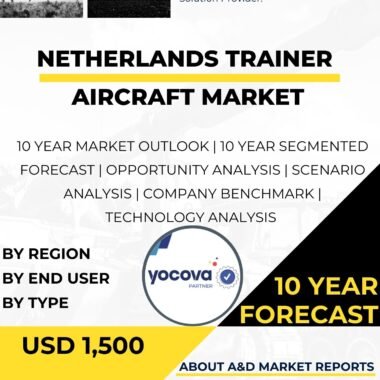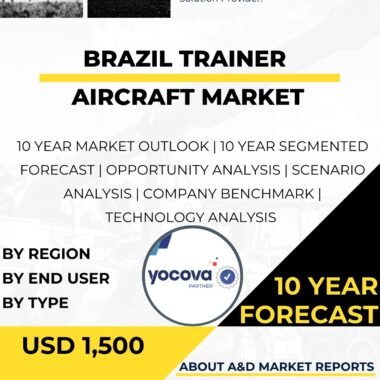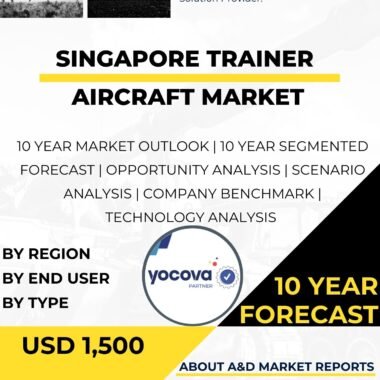Description
Overview of the Australia Trainer Aircraft Market
The Australia trainer aircraft market has evolved significantly over the years, reflecting the nation’s strong commitment to building a capable and well-trained air force. Trainer aircraft play a vital role in preparing pilots for the complexities of modern military aviation. Australia’s vast airspace, diverse training environments, and growing defense requirements have driven consistent growth in this market.
Focus on Pilot Training and Skill Development
One of the main drivers of the Australia trainer aircraft market is the country’s emphasis on professional pilot training. To develop highly skilled pilots, Australia continues to invest in advanced trainer aircraft with modern avionics and simulation systems. These aircraft provide realistic training experiences that prepare pilots to operate various combat and support aircraft effectively.
Strengthening Strategic Partnerships
Australia’s defense alliances and collaborations have also strengthened its trainer aircraft sector. Working with nations that possess advanced aerospace technology allows Australia to acquire high-quality trainer aircraft and share expertise. Such partnerships enhance the Australian Air Force’s capabilities and ensure smooth cooperation during joint defense operations and training programs.
Meeting Diverse Training Needs
Australia’s unique geography presents diverse training challenges — from open outback skies to complex urban airspaces. As a result, the demand for versatile trainer aircraft remains strong. Aircraft equipped with cutting-edge navigation systems, avionics, and simulation technologies help pilots gain experience across multiple flight conditions and mission types.
Modernization and Expanding Defense Capabilities
Ongoing defense modernization has been another major factor behind the growth of the Australia trainer aircraft market. As Australia upgrades its military assets and enhances operational readiness, the need for modern trainer aircraft continues to rise. These acquisitions align with the country’s goal of maintaining a credible defense presence across the Indo-Pacific region.
Indigenous Development and Self-Reliance
The development of indigenous trainer aircraft has become a cornerstone of Australia’s defense strategy. The domestic aerospace industry focuses heavily on research and innovation to produce aircraft that meet specific national requirements. Indigenous production helps reduce foreign dependency, promotes local expertise, and supports the overall growth of Australia’s defense sector.
Technological Advancements in Trainer Aircraft
Modern trainer aircraft now feature advanced avionics, electronic warfare systems, and realistic simulation tools. These technologies improve training quality, reduce operational costs, and ensure pilots are well-prepared for real-world missions. Such innovations are reshaping the Australia trainer aircraft market, making it more competitive and efficient.
Advancing Aerospace Education and Workforce Development
Australia’s strong commitment to aerospace education supports its long-term defense goals. By developing skilled aviation professionals, the nation ensures a steady supply of qualified pilots and engineers. Trainer aircraft play a central role in this ecosystem, providing foundational training essential for professional growth in the aviation field.
Simulation and Virtual Training Integration
The integration of simulation technologies—such as virtual reality, augmented reality, and immersive flight simulators—has transformed pilot training. These tools deliver realistic experiences that improve learning outcomes while lowering the environmental and financial costs associated with live training exercises.
Export Potential and Economic Growth
Australia’s investment in modern trainer aircraft also contributes to its defense export potential. Its growing expertise in pilot training and aircraft technology enhances its reputation as a reliable defense partner. The ability to export training solutions and systems supports national economic growth and boosts Australia’s standing in the global defense market.
Conclusion
The Australia trainer aircraft market is a vital component of the country’s defense and aerospace strategy. Driven by pilot training needs, technological innovation, and international cooperation, it continues to expand steadily. Through indigenous development, modernization, and the adoption of simulation technologies, Australia is building a capable air force and reinforcing its position as a key defense player in the Indo-Pacific region.




